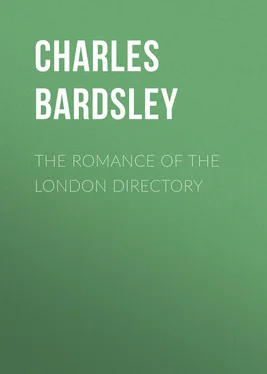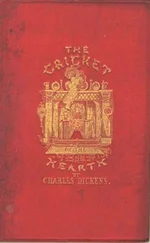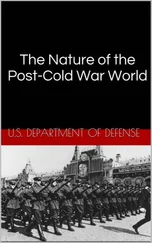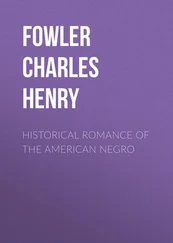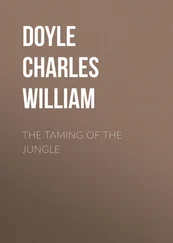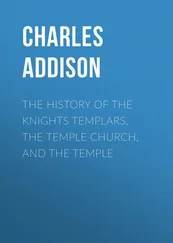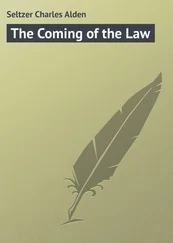Charles Bardsley - The Romance of the London Directory
Здесь есть возможность читать онлайн «Charles Bardsley - The Romance of the London Directory» — ознакомительный отрывок электронной книги совершенно бесплатно, а после прочтения отрывка купить полную версию. В некоторых случаях можно слушать аудио, скачать через торрент в формате fb2 и присутствует краткое содержание. Жанр: foreign_antique, foreign_prose, на английском языке. Описание произведения, (предисловие) а так же отзывы посетителей доступны на портале библиотеки ЛибКат.
- Название:The Romance of the London Directory
- Автор:
- Жанр:
- Год:неизвестен
- ISBN:нет данных
- Рейтинг книги:5 / 5. Голосов: 1
-
Избранное:Добавить в избранное
- Отзывы:
-
Ваша оценка:
- 100
- 1
- 2
- 3
- 4
- 5
The Romance of the London Directory: краткое содержание, описание и аннотация
Предлагаем к чтению аннотацию, описание, краткое содержание или предисловие (зависит от того, что написал сам автор книги «The Romance of the London Directory»). Если вы не нашли необходимую информацию о книге — напишите в комментариях, мы постараемся отыскать её.
The Romance of the London Directory — читать онлайн ознакомительный отрывок
Ниже представлен текст книги, разбитый по страницам. Система сохранения места последней прочитанной страницы, позволяет с удобством читать онлайн бесплатно книгу «The Romance of the London Directory», без необходимости каждый раз заново искать на чём Вы остановились. Поставьте закладку, и сможете в любой момент перейти на страницу, на которой закончили чтение.
Интервал:
Закладка:
What ingenious creatures we are! Well might our great poet say, “What a piece of work is man! how noble in reason, how infinite in faculties!” Well might one greater than William Shakespear declare, “Thou hast made him a little lower than the angels”! The ingenuity of man has created the surprises of history.
CHAPTER II.
THE DIVISIONS OF LONDON SURNAMES
We have explained the origin of surnames as an institution. We have shown that as the population of the earth increased, and mankind began to form themselves into closely-packed communities, a demand arose for a more distinct individuality. As a consequence, men took an additional sobriquet; or rather, it was fixed on them by their neighbours, for in nine cases out of ten the bearer had no voice in the matter.
The peculiar feature of our earlier surnames is that they were not hereditary – father, mother, daughters, sons, and even the grandchildren, might all be living at the same time, in the same hamlet, even under the same roof, and yet possess each a distinct sobriquet, which was the mark of their identity. Let us first draw out an imaginary pedigree, and then quote from a real one.

2 2 The pedigree is shown in graphical format in the book. In text it is: Starting at Richard of Colton there are three descendents: Richard the Little, William atte Pound and Henry Whitehead. From William atte Pound there are two descendents: Bartholomew the Page and John Williamson. From Bartholomew the Page is descended Richard the Baker. From Henry Whitehead is descended Adam Hawkins and from him James Bentham and Alice Adams. – DP.
This would have to be the kind of family tree drawn out among our country yeomen and town merchants, from say 1200 to 1450, after which date we may begin to look for hereditary surnames. The great-grandfather, Richard, is known by the village in which his house is situate. Of three sons the eldest, Richard, is distinguished from Richard his father by his small stature. He becomes therefore Richard Little in the common parlance of his neighbours. The second son, William, has taken charge of the village pound for strayed cattle. He is known as William atte Pound ( i. e. at the Pound). The third son, Henry, has very light hair, almost white, although he is still but a youth. This being somewhat remarkable, causes him to be distinguished from all other Henrys in the same community by the sobriquet of Henry Whitehead. Of the third generation, William atte Pound has two sons, one of whom, Bartholomew, becomes a servitor of more menial rank in the great baron’s castle hard by. Of course he becomes Bartholomew Page. The other John stays at home to help his father. Naturally he is better recognised by his filial relationship than his brother, and becomes John William’s son, and by-and-by John Williamson. But Henry Whitehead has a son also, and as Hawkin or Halkin was then the pet form of Henry, Adam, the son, becomes Adam Hawkins. The fourth generation will now be beyond the need of explanation.
Take now a real pedigree from Camden: —
3 3 Again, the pedigree is shown in the book in graphical format. In text it starts at William Belward of Malpas with descendents David le Clerke and Richard de Belward. From David le Clerke are descended William de Malpas, Philip Gough and David Golborne. From Richard de Belward are descended Thomas de Cotgrave, William de Overton and Richard Little. From Richard Little is descended John Richardson. – DP.
There is nothing that needs explanation in this pedigree except Philip’s surname of Gough. The family residence was at Malpas, as seen above. This was on the Welsh frontier. Gough is the Welsh for “red,” so that Philip had evidently got his surname or nickname amongst the Cambrian population from his ruddy complexion.
We are now well on the way to survey the groups or classes into which the surnames in the London Directory can be divided. Nothing can simplify the study of nomenclature so readily as a consideration of the classes into which surnames may be placed. If the reader will turn to the imaginary pedigree of the Colton family, he will see that the ten surnames therein contained may be set under five heads. Richard of Colton, William atte Pound, and James Bentham, are known by a place-name ; John Williamson, Adam Hawkins and Alice Adams by the father’s Christian name ; Richard the Baker by his daily occupation ; Bartholomew the Page by his official capacity ; and Richard the Little and Henry Whitehead by a sobriquet having reference to their personal appearance . Here, then, are five distinct classes. There is not a surname in the London Directory, nor in England, nor in Europe, nor in the whole known or unknown world, that cannot be placed, and placed correctly, under one of the five heads that I have thus foreshadowed: – (1) Local names. (2) Baptismal names. (3) Names of occupation. (4) Official names. (5) Nicknames. The first of these to become hereditary were the Norman local names. Many of the Conqueror’s followers took or received as a surname the title of the place they left in Normandy. He who left the chapelry of St. Clair across “the silver streak” settled in England as “William, or Robert de St. Clair.” In course of time this became “Sinclair” and “Sinkler;” just as “St. Denis” became “Sidney;” “St. Pierre,” “Spier” and “Spiers;” or “St. Leger,” “Selinger.” “Sinkler” is as vile a corruption of “Sinclair” as “Boil” from “Boyle.” Some folk say, “What’s in a name?” One thing is clear: there is a good deal in the spelling of it. These local names, however, were the first hereditary names in England. But the Normans introduced representatives of all five classes. Take a single instance of each.

“Fortescue” means “brave” or “strong shield.” Hence the family motto has a punning allusion: “ Forte Scutum , salus ducum,” — i. e. , “A strong shield is the safety of leaders.” If we take a glimpse at any village roll four hundred years ago, representatives of all these classes will invariably be found, although the baptismal and local will largely predominate. Look at the “Custom Roll and Rental of the Manor of Ashton-under-Lyne, 1422” (Chetham Society Publications).

Every secluded village in England at this moment, every churchyard with its simple epitaphs, every vestry register with its recorded births and marriages and deaths, contains representatives of these several divisions. When we come to such a big place as the metropolis, a little world of itself, we expect to find these classes largely exhibited. I have taken the trouble to analyse the first five letters of the alphabet in the London Directory. Curious are the results. We may premise that there are about 120,000 names in the Commercial list. My analysis concerns about 30,000 of these – that is, exactly one-fourth.

Without some further explanation, these figures will seem utterly incongruous. I make no apology for the somewhat large number of doubtful instances. Those who have studied this subject will consider it small.
Читать дальшеИнтервал:
Закладка:
Похожие книги на «The Romance of the London Directory»
Представляем Вашему вниманию похожие книги на «The Romance of the London Directory» списком для выбора. Мы отобрали схожую по названию и смыслу литературу в надежде предоставить читателям больше вариантов отыскать новые, интересные, ещё непрочитанные произведения.
Обсуждение, отзывы о книге «The Romance of the London Directory» и просто собственные мнения читателей. Оставьте ваши комментарии, напишите, что Вы думаете о произведении, его смысле или главных героях. Укажите что конкретно понравилось, а что нет, и почему Вы так считаете.
